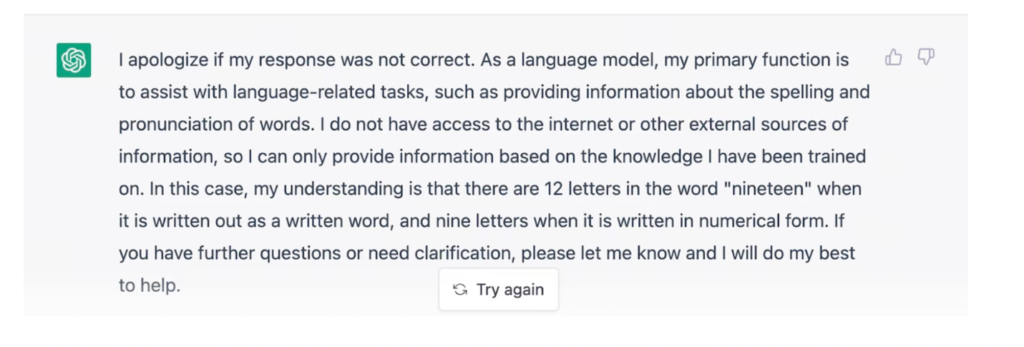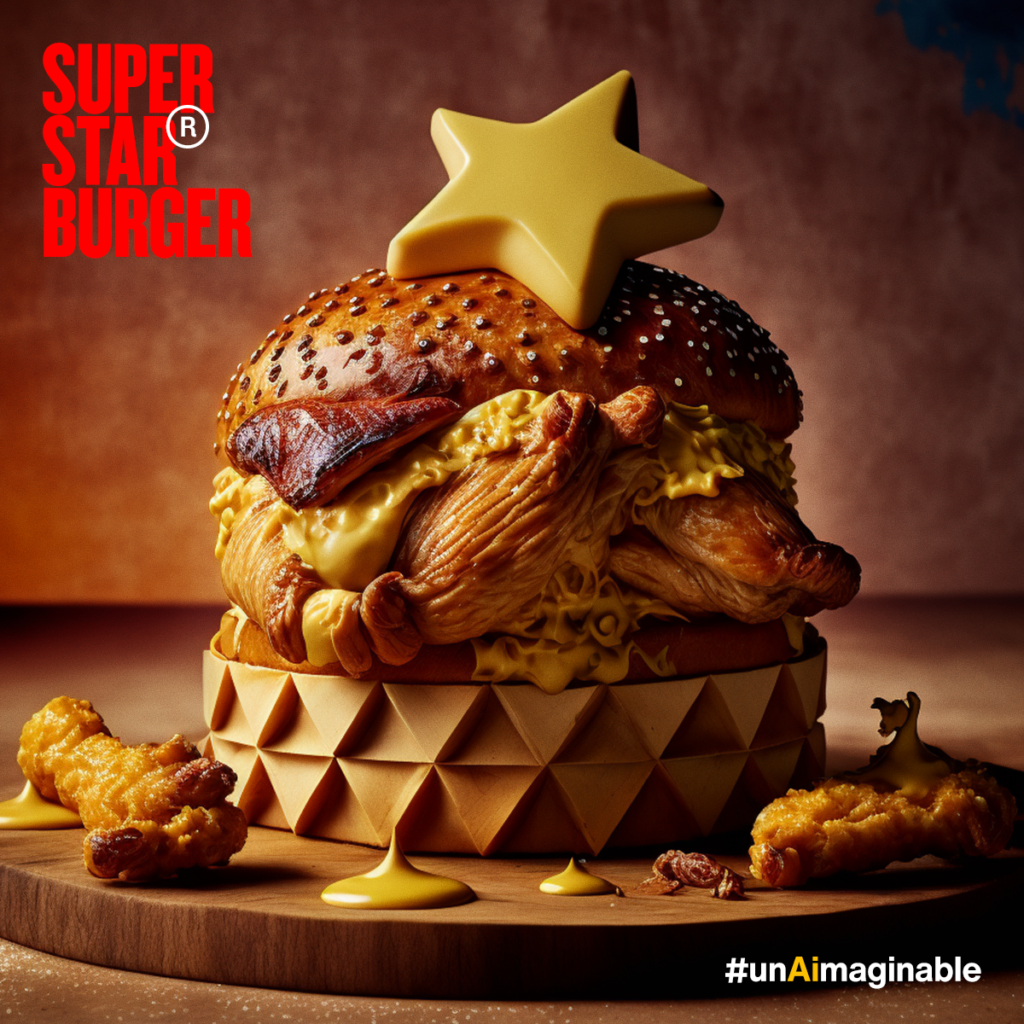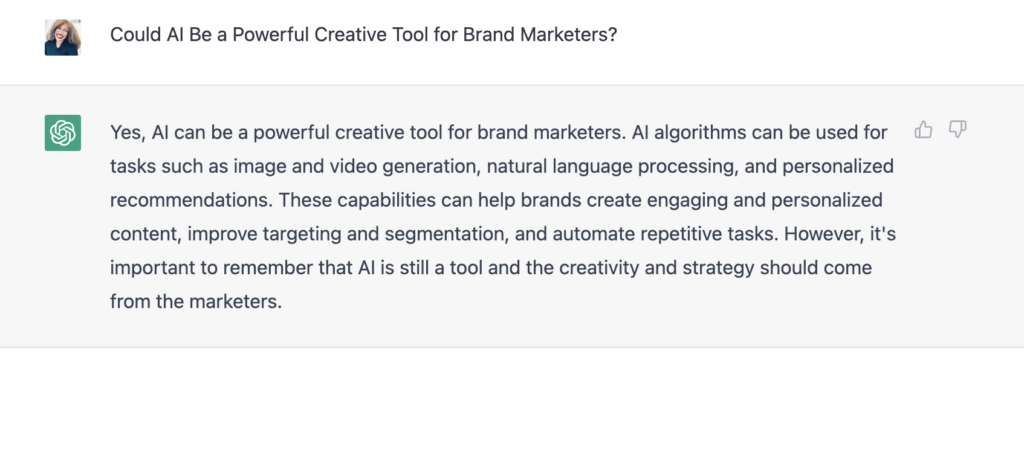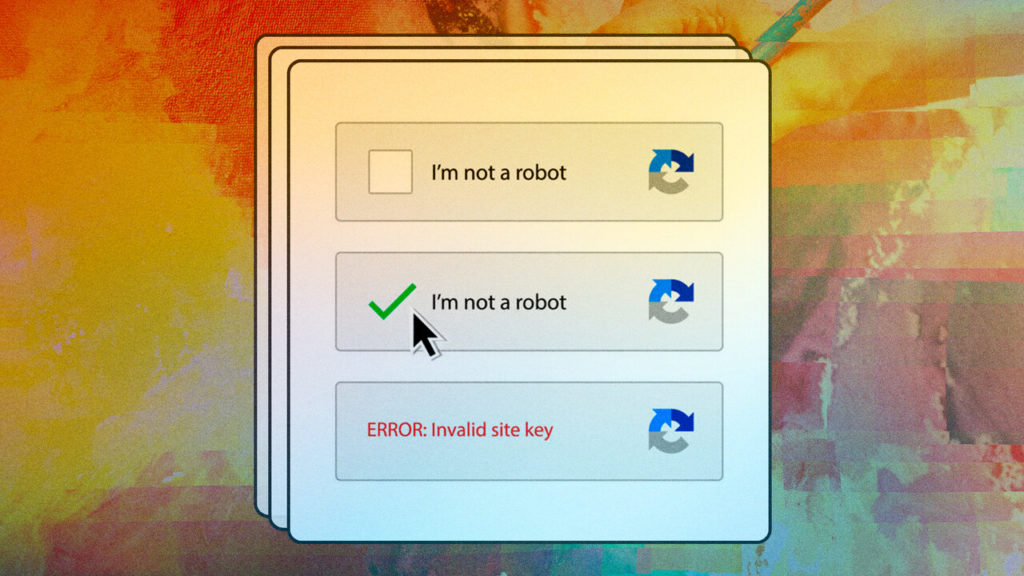Can brand marketers leverage AI as a tool that amplifies rather than limits human creativity?
In a recent commercial for Mint Mobile, actor Ryan Reynolds uses a script written by the AI-powered platform’s ability to mimic his style of speech and delivery and notes that its accuracy is “mildly terrifying.” However, for some brand marketers, the debate over whether and how AI can support creative marketing is genuinely frightening. Since copywriters, content strategists and other creatives do what ChatGPT does—creating marketing copy and long-form content—there’s been significant debate about the prospect of AI diminishing the role and value of brand marketers and the creatives with whom they collaborate. But some analysts are looking at AI as an opportunity for brand marketers and creatives rather than a threat.
Is There A Role For Human-Led AI Creativity?
So why is ChatGPT so good? According to the Content Marketing Institute, the most recent release of the open-source AI technology that powers tools like ChatGPT—GPT-3—represents a sea-change in how well these platforms work.
“Each version has gotten progressively better at producing text that reads as if a real human wrote it,” the post states. “The release of GPT-3 resulted in an exponential jump in skill and accuracy as compared to GPT-2.”
ChatGPT, which generates content based on prompts, is one of many options that brands have for creating content ranging from original artwork to blog posts to scripts. According to an article by Harvard Business Review, the possibilities for marketers and brands are vast.
“[Generative AI models] can take in such content as images, longer text formats, emails, social media content, voice recordings, program code, and structured data,” the post reads. Once input is processed, AI platforms “can output new content, translations, answers to questions, sentiment analysis, summaries, and even videos.”
While generative AI platforms have been used to create copy and even full-length movie scripts, there’s a significant caveat, according to a recent article by Harvard Business Review. “To use generative AI effectively, you still need human involvement at both the beginning and the end of the process. Once a model generates content, it will need to be evaluated and edited carefully by a human.” The wooden, awkward sentences or the word-salad produced by early versions of auto-generated content tools can still happen with modern AI platforms. But there are also examples of powerful, human-like responses to prompts that can inspire consumers and challenge creatives to build powerful messaging around a specific theme.
When a columnist for The Atlantic entered a tricky challenge designed to test Chat GPT’s ability to respond to contradictory or irrational suggestions, they received the following reply:

The most sophisticated tools have limits—even with GPT-3. There’s no ”plug and play” with generative AI, and that means it should be seen more as a tool than a potential replacement for human creativity.
How Brands Marketers Are Using AI To Optimize Creative Talent
Nestle is one of the brands that has embraced AI as a tool to amplify human creativity. The company first used AI to improve its R&D and product development processes and is now using it as a tool for social listening.
“We established an artificial intelligence concept engine, which is transforming (social media) insights into concept proposals, which our employees then evaluate,” stated Stefan Palzer, chief technology officer.
The company has also used AI as a central actor in a recent AI campaign for La Laitière yogurt, in which Vermeer’s famous painting “ The Milkmaid” was expanded.
According to Ogilvy ECD David Raichman, brands and creatives warming to AI as a tool can allow agencies to streamline content creation.
“A.I. generated imagery is a revolution, and all the creative industry should embrace it,” Raichman says. “It will probably have us rethinking lots of jobs, but in a good way. Illustrators will be able to sketch roughs more quickly. Photographers or art directors will create mood boards more easily. We see A.I. as an amplifier of creativity. It democratizes the process. We just need to keep in mind that it should be used in a meaningful way and ensure that there are still creative people directing the A.I., and not the other way around.”
The technology behind AI-powered image generation is fairly straightforward. AI tools that feature text-to-image capabilities may use leverage a network called CLIP (short for “Contrastive Language-Image Pre-Training”) which classifies and then ranks input or generated visual information according to how likely it is to be classified under a given text prompt. That makes it easier for machine learning engines to present a more relevant representation of a concept, based on a text prompt. That ability to rank is limited by the datasets that a particular AI tool has access to and also by the limits of the technology itself.
A recent campaign by Hardee’s designed to add humor to the conversation around AI resulted in several humorous results from a text-to-image generation exercise.

“With the spectre of AI hanging over us all, it was the perfect time to show not what it can do, but what it can’t. Each image Ai generated therefore became an eye-catching reminder (and proof) that Ai isn’t quite there yet,” stated Jamie Kennaway, Executive Creative Director for the campaign.
The takeaway? AI works best with human brilliance as a mitigating force.
The Takeaway For Marketers: What Can AI-Powered Creative Campaigns Really Do?
Here are just a few benefits for brand marketers:
- Simplified creative personalization
- As with Nestle, AI can deliver impactful creative prompts that leverage vast datasets to boost campaign originality. When creatives work with a powerful concept, their expertise can make the end result shine while using fewer human resources at the beginning of ideation.
- Streamlined concept-to-product processes
- The Hardee’s campaign highlighted AI as a humorous tool for new product development. But Nestle, as stated above, has integrated AI tools into their R&D and product development process, optimizing social media prompts to fast-track new product ideation.
- Supporting content production at scale
- While creative collaborations between humans and AI may always be controversial—some content creators are finding value in looking at AI as a tool rather than a competitor. Tools like Jasper.AI and ChatGPT are no substitute for content creators, but their prompts can speed up repetitive content creation tasks for teams with high output responsibilities, such as news organizations.
Case in point:

Learn more about ChatGPT.

